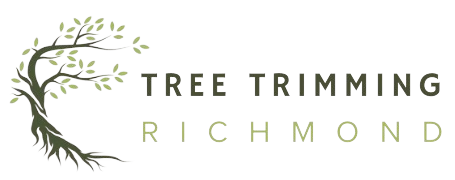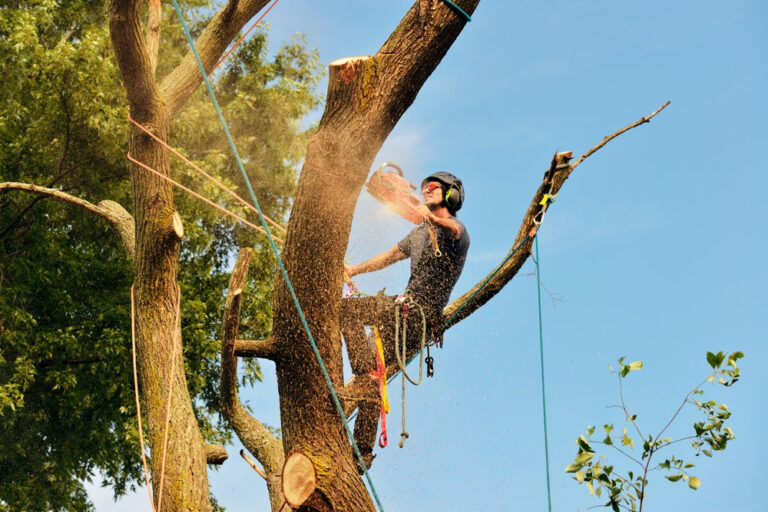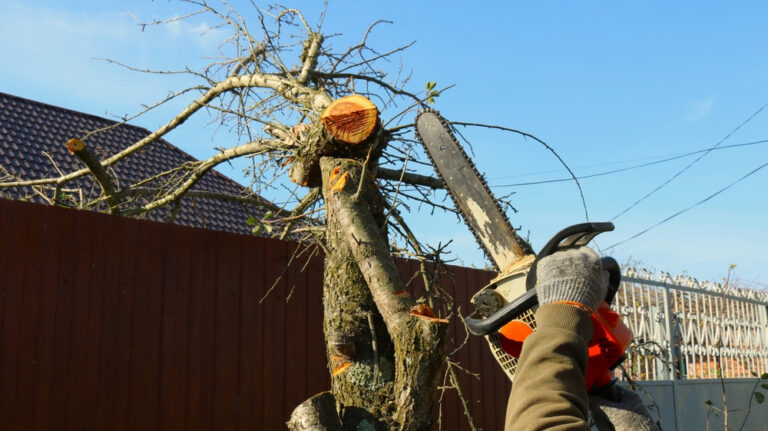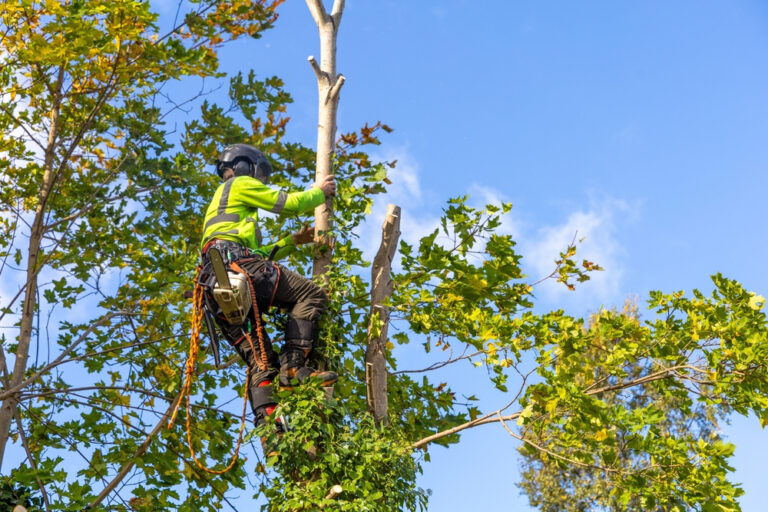Understanding Different Pricing Models for Tree Removal in Richmond, VA
In Richmond, VA, tree removal is an important service for property owners. These services make homes safer and more attractive by doing things like trimming back overgrown branches and taking care of sick trees. But the price of tree removal can vary a lot depending on a number of factors. This is why it’s important for homeowners to understand the different ways that experts set their prices. This article goes into detail about the different ways to price tree removal in Richmond, VA. It also talks about the things that affect prices, how to estimate costs, and how to pick the right service provider.
1. Factors Influencing Tree Removal Costs
There are a few important things to think about when you want to get rid of a tree because they can affect how much it costs in the end. Knowing about these things can help people make smart choices and plan their budgets well for the services they need.
a. Tree Size and Height
The size and height of the tree are two of the most important things that affect how much it costs to remove. Costs tend to be higher for bigger and taller trees because they require more work, specialized tools, and time. Most of the time, trees less than 30 feet tall are small and can be cut down for less money. But it gets harder to get rid of trees as they get bigger, especially ones that are over 100 feet tall. For these kinds of trees, you need experts who know how to safely take down big structures, which can make the costs go up a lot.
The ways used to cut down a tree are also affected by how tall it is. For example, to safely reach high branches on tall trees, cranes or bucket trucks may need to be used, which raises the cost of labor and renting the right tools. Because of this, homeowners should expect prices to vary greatly based on the size and height of their trees.
b. Tree Condition
Removal costs of a tree depend much on its health and state of affairs. sick, dying, or extensively pest-infested trees could call for extra care during removal. If a tree is unstable, for example, arborists might have to employ particular techniques such sectional removal to avoid possible hazards. Higher general expenses can result from this extra work as well as from the use of specific tools.
Furthermore, poor condition trees could be more difficult to remove because of brittle branches or rotting trunks. Homeowners should so assess the condition of their trees before consulting removal companies. A licensed arborist’s tree assessment can point up problems and offer ideas on the best course of action.
c. Location of the Tree
The cost is significantly influenced by the location of the tree to be taken down. Trees close to buildings, electrical lines, or other constructions provide special risks and problems. Professionals may have to use specialized tools, such cranes, to safely negotiate these challenges, therefore affecting the overall cost of the removal.
Still another important factor is the tree’s accessibility. Easily approachable trees could need less time and effort to remove, so reducing costs. On the other hand, trees in limited areas, including backyards without appropriate access, could call for extra crew members or specialized tools to guarantee safe removal. Therefore, in estimating expenses, homeowners should take into account the position of the tree and any surrounding constructions.
d. Urgency of Service
In an emergency, including storm damage or acute safety concerns, the urgency of tree removal can result in higher expenses. Many businesses charge a premium for immediate needs when property owners need fast service. Last-minute scheduling, overtime work, and any extra crew members required to guarantee the job is completed safely and effectively all are covered by this extra cost.
This should be something homeowners consider while deciding whether or not to remove trees. Planning ahead and scheduling events under non-emergency circumstances will, if at all possible, help to guarantee prompt service and lower costs.
e. Additional Services
Some tree removal companies have add-on choices that impact the overall cost. Although they cost more, services include site cleanup, wood chipping, and stump grinding improve the general value and safety of the project.
For instance, the stump left behind a tree could be ugly and impede further landscaping projects. Stump grinding—which calls for specific tools—is cutting the stump to below ground level. Usually, this process comes with extra expenses. Furthermore, wood chipping companies can turn fallen branches into mulch, so using the trash in a good way and enhancing the look of the property.
Given their major influence on the total cost, homeowners should assess their needs and determine whether to add these services into their removal project.
2. Common Pricing Models for Tree Removal Services
Knowing the several elements influencing the cost of tree removal, let’s now explore the pricing strategies usually used by tree removal businesses. Every model has benefits and drawbacks; knowing them will enable property owners choose a service provider with knowledge of these differences.
a. Flat Rate Pricing
Under this price structure, pre-defined parameters guide a fixed rate paid by tree removal businesses. This simple method gives clients a full knowledge of the whole cost before any work starts. While some flat-rate models include the height and size of the tree, others might consider its condition and the particular services needed.
Advantages of Flat Rate Pricing
- Transparency: Flat rates provide clarity and allow customers to budget effectively for tree removal services.
- Simplicity: Homeowners can easily compare quotes from different companies, simplifying the decision-making process.
- Predictability: Since the price is fixed, homeowners can avoid unexpected costs during the removal process.
Disadvantages of Flat Rate Pricing
- Limited Flexibility: Flat rates may not adequately address unique circumstances or complexities, potentially leading to higher costs if additional services are required.
- Potential for Higher Costs: For intricate jobs involving large or hazardous trees, flat-rate pricing may not be the most economical option.
b. Hourly Rate Pricing
Complex tree removal jobs often call for hourly rate pricing. Under this approach, consumers are charged depending on the job completion times. This pricing system lets businesses change their rates based on the particular needs of every project, therefore enabling flexibility.
Usually covering labor, tools, and any other incidental expenses, the hourly pay also comprises When the scope of work is unknown or when unanticipated difficulties develop, this approach is especially helpful.
Advantages of Hourly Rate Pricing
- Flexibility: Ideal for projects with unpredictable factors, allowing companies to adapt to changing conditions.
- Fair Pricing for Small Tasks: Customers only pay for the hours worked, which can be beneficial for smaller tree removal jobs.
- Detailed Cost Breakdown: Homeowners receive a breakdown of labor and services, promoting transparency.
Disadvantages of Hourly Rate Pricing
- Difficulty in Estimating Total Costs: Homeowners may find it challenging to estimate the final cost beforehand, especially if the project becomes more complicated.
- Risk of Higher Expenses: Unforeseen challenges or complexities can lead to higher overall prices if the project takes longer than initially anticipated.
c. Per Inch Pricing for Stump Removal
Often following tree removal is stump removal to stop regrowth and preserve the look of the property. Many businesses charge depending on the stump’s diameter using a per-inch pricing approach for stump removal. This approach is especially helpful for homeowners who just need stump grinding rather than complete tree removal since it allows them to quickly project expenses.
Advantages of Per Inch Pricing
- Transparency: Per-inch pricing is clear and easy to calculate, allowing customers to understand costs upfront.
- Suitable for Specific Needs: This model is ideal for customers focused solely on stump removal, without the added complexity of tree removal pricing.
- Fair Pricing for Smaller Stumps: Homeowners with smaller stumps benefit from potentially lower fees, avoiding unnecessary costs associated with larger removals.
Disadvantages of Per Inch Pricing
- Limited to Stump Removal: This pricing model is not applicable for full tree removal, limiting its use.
- Higher Costs for Larger Stumps: Larger stumps can become expensive, especially for mature trees with extensive root systems.
d. Per Tree Pricing
For homes with several trees that need to be taken down, the per-tree pricing approach appeals since it charges a set fee for every tree removed. Businesses figure expenses using tree counts and may provide discounts for large-scale projects, therefore offering an overall package price.
Advantages of Per Tree Pricing
- Ideal for Large Properties: Perfect for larger properties with numerous trees, offering potential savings for bulk removal projects.
- Simplified Cost Calculation: Customers benefit from straightforward pricing, making it easy to budget for removal services.
- Transparency in Pricing: Homeowners can quickly see the total cost based on the number of trees being removed.
Disadvantages of Per Tree Pricing
- Limited Flexibility: This model may not suit single-tree projects or complex jobs that require individualized attention and pricing.
- Potential for Hidden Costs: Companies may not adequately factor in specific obstacles or risks, potentially leading to unexpected expenses.
e. Hybrid Pricing Models
Certain tree removal firms provide hybrid pricing schemes combining components of several pricing systems. This method offers flexibility and addresses particular client demands by allowing customized costs that fit every particular project. For simple tree removal, for instance, a company might charge a set fee and include hourly fees for more labor-intensive chores like cleanup.
Advantages of Hybrid Pricing Models
- Customizable: Provides flexibility to address unique project requirements, striking a balance between transparency and adaptability.
- Ideal for Complex Projects: Suitable for jobs needing specialized services, ensuring fair pricing for a range of tasks.
- Potential Discounts: Companies often include discounts for bundled services, providing cost-effective options for homeowners.
Disadvantages of Hybrid Pricing Models
- Complexity: Customers may find it harder to understand costs without a detailed breakdown of services and charges.
- Variability: Pricing structures can differ significantly between companies, making it challenging for customers to compare estimates.
3. How to Estimate Tree Removal Costs in Richmond, VA
Calculating Richmond, Virginia’s tree removal expenses requires knowledge of the several pricing schemes and above mentioned variables. These actions will help homeowners better understand what to anticipate from a financial perspective about tree removal services.
a. Request a Detailed Quote
Homesowners should get quotes from many reliable tree removal firms to start the estimation procedure. All charges—including labor, tools, and any extra services—should be clearly stated in a thorough quote. Comparing quotes from several organizations helps consumers find which one provides the best value and learn about the pricing strategies of every business.
Requesting a written estimate that precisely describes the extent of work and any factors influencing the overall cost helps you. This clarity guarantees that everyone is in agreement and helps to prevent project misinterpretation.
b. Evaluate Extra Services
Homeowners should ask about any services the quotes could call for. Some businesses charge separately; others combine stump grinding, cleanup, and wood chipping. Knowing which other services are covered guarantees homeowners obtain thorough tree removal and helps them avoid unanticipated expenses.
Moreover, assessing the requirement of these additional services might help house owners determine what they really want. For instance, extra expenses for stump grinding could arise should a tree be taken down but the stump stays. Homeowners can save this additional cost, though, if they are happy to leave the stump exactly as it is.
c. Assess Payment Options
Homeowners should also take into account the several ways that tree removal businesses provide for payment. Some suppliers could have flexible payment schedules, which would help with budgeting especially for more significant projects. From flat rates to installment-based payments, payment choices let consumers select a plan suitable for their circumstances.
Talking about these choices with the tree removal service provider previous to contract signing helps homeowners avoid any surprises down road. Knowing the payment terms up front guarantees clients are comfortable with the financial commitment and promotes openness.
d. Consider Seasonal Pricing Fluctuations
Tree removal costs in Richmond, Virginia, could change with the seasons. During off-peak seasons, including winter, when demand for tree services declines, prices could be less. Homeowners trying to cut expenses on tree removal can think about timing their appointments for these slower times.
To help further save expenses, several businesses often provide specials or discounts at particular seasons of year. Significant savings might result from keeping current with seasonal trends and company offerings.
4. Choosing the Right Tree Removal Company
Guaranturing a safe, quick, and reasonably priced tree removal service depends on choosing the correct tree removal business. Here are some important guidelines for selecting a trustworthy Richmond, VA tree removal company:
a. Check Licensing and Insurance
Homeowners should give licensed and insured tree removal businesses top priority while investigating others. Should mishaps or property damage arise during the relocation procedure, this protection is absolutely vital. It also guarantees that the business satisfies the safety and professional criteria Richmond’s rules prescribe.
Although unlicensed vendors might have lower prices, homeowners run major financial and legal risk from them. Dealing with qualified experts gives one peace of mind since it guarantees that the work will be done in line with local rules and safely.
b. Read Customer Reviews and Testimonials
Examining client testimonials and evaluations will help one get important understanding of the dependability and quality of service of a company. Good evaluations usually point to professionalism and client satisfaction past. Negative evaluations, on the other hand, could draw attention to problems including poor service quality, delays, or unseen expenses.
Online sites as Google, Yelp, or Angie’s List help many homeowners compile comments on different service providers. Researching and reading client experiences will help you to focus down choices and choose a trustworthy business.
c. Confirm Experience with Similar Projects
With tree removal, experience is absolutely essential. Particularly those involving complicated or hazardous trees, homeowners should look for businesses with a history of managing like tasks. Those with experience are more likely to possess the tools and knowledge required to guarantee a quick and effective eradication process.
Requesting references from prior customers can also help one have more faith in the ability of a company. Good comments from individuals who have used their services can support a homeowner’s decision.
d. Ask for a Written Contract
Homeowners should ask for a signed contract detailing the extent of work, cost, and any extra services before starting tree removal operations. By precisely outlining expectations and responsibilities, a well-written contract guards the homeowner as well as the tree removal business.
The agreement should contain specifics on the payment conditions, completion schedule, and warranties or guarantees. This material helps to prevent misunderstandings and offers legal action should problems develop during or following the project.
e. Verify Safety Standards and Equipment
Choosing a tree removal firm should always first give safety high importance. Homeowners should make sure the business follows high safety guidelines and makes use of appropriate tree removing tools. This allegiance reduces hazards to the property as well as the personnel.
Safety-conscious businesses exhibit a greater dedication to quality and professionalism by investing in modern tools and qualified staff members. Homeowners can probe the safety procedures in place and find out about the tools utilized during the removal operation.
5. Ways to Save on Tree Removal Costs
Eliminating a tree can be a major financial outlay. Many techniques, though, can help homes save without sacrificing safety or quality. These are some smart strategies to cut the expenses related to tree removal:
a. Schedule During Off-Peak Seasons
Arranging tree removal during off-peak seasons when demand is less will help homeowners. For tree services, for example, winter is sometimes a slower season that results in possible savings. By means of lower demand, scheduling at certain times helps ensure speedier service and helps to lower expenses.
Companies might also run special offers or lower prices during particular seasons, therefore improving the savings possibilities. This should be taken into account by homeowners designing their tree-removing efforts.
b. Bundle Services for Discounts
Another good approach to cut tree removal expenses is grouping services. When clients want several services—such as tree removal, stump grinding, and trash cleanup—many businesses provide discounts. Combining these services helps homeowners often find a better total rate.
During the quoting phase, homeowners should talk about bundling possibilities with the tree removal business. Clearly stating all required services will help to guarantee the best rate.
c. Negotiate Pricing
Negotiating with tree removal firms should not be avoided by homeowners. Many of the providers value proactive communication and could be ready to change their rates depending on certain project requirements. Ask about available discounts or pricing changes to identify a match within your means.
Customers can also highlight quotes they came across from other businesses. This aggressive approach could inspire suppliers to provide better terms or pricing to secure the job.
d. Perform Basic Cleanup
By taking care of simple cleanup chores themselves, homeowners can save money if safe and practical. For tree removal teams, raking leaves, cutting smaller branches, and getting the area ready might help to lighten their job. Reducing the amount of trash to be disposed of could help consumers save general labor costs.
Homeowners should only engage in activities they feel competent doing, though. Safety should always come first, hence one should avoid unneeded hazards.
Conclusion
For Richmond, Virginia, residents especially need to be aware of the several pricing strategies for tree removal. Property owners can make wise judgments that fit their demands and budget by thinking through the several elements affecting expenses and familiarizing themselves with the pricing policies applied by service providers.
Whether one chooses flat charges, hourly pricing, or hybrid models, understanding the nuances of tree removal services helps one save unanticipated costs. Homeowners should give safety, experience, and client comments top priority when selecting a tree removal business. They can also follow plans to guarantee a good tree removal experience while cutting expenses.
By means of deliberate planning and smart decisions, homeowners may guarantee that tree removal improves the safety and look of their house. Following these rules will help to ensure that tree removal goes more smoothly and leaves Richmond homes gorgeous and well-kept. Researching and selecting the correct service provider will eventually help to ensure a successful project and long-term contentment.
Tree Trimming Richmond
(804) 533-3943
https://treetrimmingrichmond.com/



